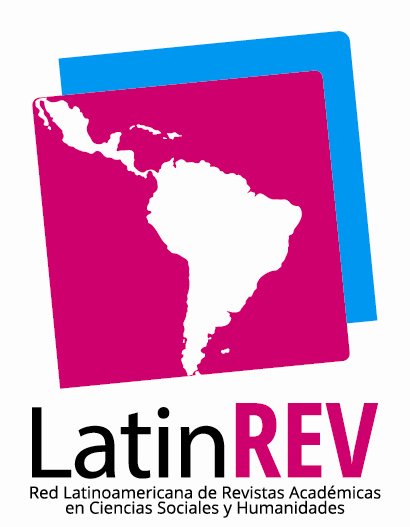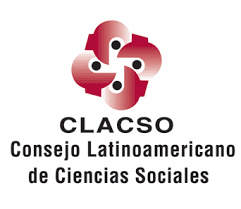Submissions
Submission Preparation Checklist
As part of the submission process, authors are required to check off their submission's compliance with all of the following items, and submissions may be returned to authors that do not adhere to these guidelines.Author Guidelines
Guidelines for the submission of articles
Only original and unpublished papers will be accepted and will be considered by the Editorial Committee for publication. Likewise, it is essential that the proposed presentations are not submitted for presentation in other journals or editorial bodies. The papers that are ready for publication, that is, that have passed the blind review, will be published in the postulated issue of the journal or in the following one. In this way, the editorial group reserves the rights over published and unpublished articles.
ARTICLES, RESEARCH, PAPERS THAT DO NOT STRICTLY COMPLY WITH THE FOLLOWING REQUIREMENTS WILL NOT BE ACCEPTED:
Submissions:
The postulation of articles will be done through the official site of the journal at the following link: https://revistas.unc.edu.ar/index.php/intersticios. and should be sent to the journal's email: intervencioneslatinoamericanas@gmail.com
Papers should be sent in Word format extension ".docx" which corresponds to Word 2007 or extension ".doc" which corresponds to Word 2003, named only with the title of the paper. It is requested that the submissions do not contain any biographical or bibliographical reference of the author inside the Word document, in order to guarantee the "double blind" evaluation process.
Together with the manuscript, another file containing the following data should be sent:
Names and surnames
E-mail address
Institutional affiliation
Brief summary of your Curriculum Vitae (250 words max.)
ORCID (optional)
Articles should be included in one of the following sections:
Articles for Dossier:
It is the expression of a specific research, as a partial or final result of the same, which highlights the reflective and critical problematization in relation to the Dossier Thematic Section proposed for each of the Issues and Volumes to be published.
Dialogues and debates:
The interest of this section is to promote dialogues and debates within the themes dealt with in each of the corresponding issues and volumes. This dynamic allows authors to establish fertile dialogues among themselves. New conversations may also be proposed.
Reviews:
Reviews are research articles that refer to published books of limited circulation; not necessarily of the latest edition. The objective is to bet on a wider circulation to promote the approach of authors, themes and editions that are difficult to access due to the complexity of the publishing market.
Submission of reviews: The book reviews submitted must comply with the following indications:
1) Details of the author of the review: Names and surnames. Position and institutional origin. Contact e-mail address.
2) Structure or bibliographic data: Author. (Year); Title of publication; Publisher; ISBN; City. Images of the book cover (jpg format).
General Section:
The general theme of our Journal Interstices of Politics and Culture. Latin American Interventions aims to investigate the scope and meaning of the critical function of Latin American philosophy. On the one hand, to inquire into the current debates between postcolonial and decolonial theories and epistemologies of the South. On the other hand, to highlight the discussions and theories on the conditions of possibility of political subjects from the local contexts of emergence from Latin America and the Caribbean.
The emergence and the need to produce a new paradigm of intellectual sovereignty requires a critical analysis of the conditions of colonization, the modern epistemes that sustain the hegemony of the dominant paradigm through the fragmentation of the epistemic community, commodification, enclosure, demassification and privatization of education in Latin America.
We propose to reflect and analyze the conditions of possibility of the various forms of subjectivation in local contexts, seeking to focus on the processes of material and spiritual constitution of these subjectivities, from the neoliberal present. To inquire about certain decolonizing processes in which the social and political struggle operates as experiences of resistance that are articulated from diverse collective projects (autonomist, feminist, communitarian, plurinational, populist). From this framework we argue that globalization must be understood from a geo-historical perspective and from the Latin American critique, to promote in this sense, an epistemic update.
An update that has a clear relationship with the social and economic crisis, produced by the effects of globalization and its impact on peripheral countries and that accompanies the (emerging) social struggles in different parts of the continent. It is a matter of focusing on the knowledge and practices of the heterogeneous social movements that intervene as a particular form of democratic politics that overflows or rather, is on the edges of liberalism.
We are interested in works that help us to scrutinize and delimit a framework of categories that configure from the social sciences and critical humanities the limitations of modern disciplinary categories and distinctions in order to enable interdisciplinary and transdisciplinary perspectives. This epistemic openness makes viable for us a valuing of worlds, epistemic perspectives and experiences still invisibilized that constitute other, heterogeneous, baroque and variegated ways of understanding Latin America necessary to build knowledge.
Extension:
For the section "Articles Dossier", minimum 20 pages, maximum 25 pages (including tables, figures and bibliographical references).
For the section "Dialogues and Debates", minimum 25 pages, maximum 35 pages (including tables, figures and bibliographical references).
For the "Reviews" section, minimum 7 pages, maximum 15 pages (including tables, figures and bibliographical references).
In all cases they should be configured as follows: Paper size: A4 Margins: top, bottom, right and left: 3 cm. Font: Tahoma 12. Line spacing: 1.5. Aligned: justified. Indentation on the first line of each paragraph: 0.4 cm.
Tables and figures
They should be numbered consecutively (figure 1, map 1, table 1, etc.) and include title and source of the information or graphic material.
Photographs
In the case of including images or photographs, the consent of the subjects portrayed should be obtained and the author should be mentioned.
Titles and subtitles
Title of the article: right margin. Tahoma 12 in lowercase and bold, in Spanish, English and Portuguese.
Section headings:
First subtitle: left margin. Tahoma 12 in lowercase and bold. No indentation.
Subtitle section: left margin. Lowercase italic type 12. No indentation.
Authors' names
When the article is accepted by the editorial committee for publication, the name and surname, if more than one, should be written on different lines. Include e-mail address and in a footnote: institutional affiliation, work, etc. (no more than three lines). E.g.: Pérez, Eugenia* (at the bottom of the page: Dr. in Anthropology, Full Professor of Cultural Anthropology, School of Social Sciences - UBA-).
Abstract and keywords
An abstract of 250-300 words in Spanish, English and Portuguese and three to five key words in Spanish, English and Portuguese separated by semicolons should be included. Example:
Keywords: word 1; word 2; word 3.
Footnotes
Footnotes should always be numbered (1, 2, 3) and in Tahoma 10. Their purpose is to complement or deepen relevant information of the text. It is recommended to use as few footnotes as possible. Whenever possible, include the information in the body of the text. Bibliographical references should not be included.
Recommendations for the use of inclusive and non-sexist language
The editorial team recommends that submissions use inclusive language. To this end, we suggest:
Preferably use e (instead of X, @, *) to facilitate reading for those who use the lectophone software.
If a form of non-sexist writing is chosen, it should be maintained throughout the text in order to maintain a certain coherence in the writing.
It is suggested to use a vocabulary that does not respond to the invisibilization of women and dissidence. For example, instead of using "man", use "humanity" or "the human being". Instead of "the indigenous", use "indigenous collectives" or "indigenous groups".
It is suggested that the category "women" be used in the plural (and not "women") in order to avoid an essentialist and universal use of the term.
In textual quotations and bibliographical references, authors should be referred to by their full name instead of their last name or first initial. The purpose of this nomination is to increase the visibility of the contribution made by women and dissidents in the academic and scientific fields.
Citation model: APA Standards, 6th Edition
Citations in the body of the text:
Verbatim or direct quotations: these reproduce the material exactly, without changes or additions, including the original spelling and punctuation. The author, year and page number must be indicated. If the cited source does not have pagination, then the paragraph number is written.
With less than 40 words it is placed as part of the body of the text, between quotation marks (without italics) and at the end of the citation the reference data is indicated. Example:
Gutiérrez Aguilar states that the term "social movement" "(...) became commonly used precisely to name that multiform collective capacity of insubordination to what was being imposed, in different ways, as a systematic dispossession of social wealth and of the possibility of intervening in the decision on public issues (...)" (2017: 18).
With more than 40 words: it is placed in a separate paragraph, without quotation marks, with right and left indentation of 1 cm and at the end of the quotation the reference data are indicated. Example:
In the preface, the author comments:
That vigorous wave of social capacity to intervene in public affairs in multiple and polyphonic ways opened a space-time of Pachakuti; that is, it configured a social situation of disruption of what had been admitted until then as normal and everyday: the prerogative of some men and women, of certain social status and ethnic adscription, to command and decide over the fate and destiny of all others; the power, admitted as legitimate until then, to usufruct and manage social wealth in a predatory, selective and, above all, private way; that is, only for the benefit of a few, of those same ones who for decades have basked in their ability to command and in their fractious possibility of enjoyment (Guitiérrez Aguilar, 2008: 13).
Contextual or paraphrase quotations: these are used when ideas of an author are taken up again but in the words of the person writing the article. In this quotation, the author's last name and the year of publication are included as part of the content of the paragraph. It is recommended to include the page number when the text from which the ideas were taken is extensive. Example:
The concept of political subsoil is related to the notion of morphological ambiguity proper to the forms of societies, their surfaces and their multiple worlds, times and historical depths (Tapia, 2002).
General criteria:
Each reference cited in the text must be consigned in the list of bibliographical references at the end of the article.
If the sentence includes the author's last name, the year is written and, if applicable, the page number in parentheses. Example:
Luis Tapia's (2008) conceptualization of societal movements whose enclave lies in the anti-colonial and anti-racial struggle has its node in the way this movement is governed.
If the author is not included in the sentence, the last name, date and page number, if applicable, are written in parentheses. Example:
The concept of political subsoil is related to the notion of morphological ambiguity proper to the forms of societies, their surfaces and their multiple worlds, times and historical depths (Tapia, 2002).
If the work has two or more authors, both surnames are cited. Example:
Therefore, the care of material wealth in common-whatever the form in which the material wealth is presented-should be unforgettable because if that horizon of care is forgotten, the collective capacity of production of political decision is disarticulated (Gutiérrez Aguilar, Salazar Lohman and Tzul Tzul, 2016).
When it has between three and five authors, in the subsequent mentions, only the last name of the first author is written, followed by the phrase et al. without italics.
If there are more than six authors, et al. is used from the first mention.
Bibliographic references
General considerations:
A list of references cites the sources that support the research and that were used for the preparation of the work.
Only references that were cited in the body of the text should be included.
They should be ordered alphabetically by the authors' last name.
Full name and surname (not initials) should be included, in order to make visible the contribution made by women and dissidents in the academic and scientific fields.
Works by the same author are ordered chronologically by the earliest date.
When in the same year there are two or more publications by the same author or authoress should use a lowercase letter - a, b, c, etc. next to the year. Example:
Tapia, Luis (2002b). La condición multisocietal. Multiculturalidad, pluralismo y modernidad. La Paz, Bolivia: CIDES-Muela del Diablo.
Books:
Author's last name and first name (Year of publication). Title. Publication data: Edition number, volume numbers, place of publication: Publisher responsible for the publication. Example:
Hartog, François (2007). Regimes of Historicity. Presentism and experiences of time. Mexico: Universidad Iberoamericana.
If it has eight or more authors, write the name of the first six, ellipses (...) and then the last author. The & sign is used before the last author. In Spanish, y is accepted instead of &.
Electronic books:
Author's last name and first name (Year of publication). Title. Publication data: Edition number, volume numbers, place of publication: Publisher responsible for the publication. Retrieved from (link to where the book is located). To place the link it is recommended to use Google Shorterner.
Book chapter:
Author's last name and first name (Year of publication). Chapter title. Last name and first name of the editor, compiler, etc. of the book. Title of the book (pages of the chapter). Place of publication: Publisher responsible for the publication. Example:
Bidaseca, Karina (2016). White women seeking to save brown women. Or reflections on inequality and legal colonialism from postcolonial feminism. Bidaseca, Karina and Vazquez Laba, Vanesa (comps.). Feminismos y poscolonialidad. Descolonizando el feminismo desde y en América Latina (p. 85-107). Buenos Aires: Ediciones Godot.
Journal articles:
Author's last name and first name (Year of publication). Title of the article. Name of the Journal, Volume (number). Pages of the article. Retrieved from: (link or DOI of the article). Example:
Espinosa Miñoso, Yuderkys (2016). On why a decolonial feminism is necessary: differentiation, co-constitutive domination of Western modernity and the end of identity politics. Solar Journal, 12 (1), 141-171. Retrieved from https://revistasolar.pe/index.php/solar/article/view/135
Institutional authorship:
Corporate author.(Year of publication). Title: Subtitle. Place of publication: Publisher. Example:
Ministry of Environment and Natural Resources.(2004). Estado ambiental de Nicaragua. II GEO Report. Managua: MARENA.
Copyright Notice
Authors who have publications with this journal agree to the following terms:
a. Authors will retain their copyright and grant the journal the right of first publication of their work, which will simultaneously be subject to the Creative Commons Acknowledgment License that allows third parties to share the work as long as its author and first publication in this journal are indicated.
b. Authors may adopt other non-exclusive license agreements for distribution of the published version of the work (e.g.: deposit it in an institutional telematic archive or publish it in a monographic volume) as long as the initial publication in this journal is indicated.
c. Authors are allowed and encouraged to disseminate their work through the Internet (e.g., in institutional telematic archives or on their web page) after the publication process, which may produce interesting exchanges and increase citations of the published work (see The effect of open access).
Privacy Statement
The names and e-mail addresses entered in this journal will be used exclusively for the purposes stated by this journal and will not be made available to any other purpose or person.









